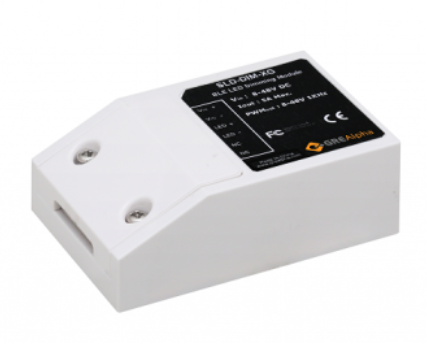History of Bluetooth technology
Bluetooth is a wireless protocol that uses short-link radio technology to establish a connection between two or more devices. Bluetooth operates at the unlicensed industrial, scientific, and medical 2.4 frequency band.
The technology behind Bluetooth was developed in 1995 by two engineers, Sven Mattison and Jaap Haartsen, for Ericsson, a telecommunications company based in Stockholm, Sweden. The precursor to Bluetooth dates to World War II. The Bluetooth foundation uses a technology called frequency-hopping spread spectrum (FHSS) which was invented by Austrian actress Hedy Lamarr to provide Americans with a secure form of communication that would overcome radio jamming and help avoid detection by the Nazis. FHSS spreads signals over rapidly changing frequencies.
FHSS was used in the military during the Cuban Missile Crisis in 1962. We use this same technology today to power GPS, wireless, and Bluetooth technologies. Bluetooth Classic radio (also called Bluetooth Basic/Enhanced Data Rate or BR/EDR) leverages adaptive frequency hopping to transmit data over 79 channels.
Per Bluetooth.com, "The Bluetooth BR/EDR radio includes multiple PHY options that support data rates from 1 Mb/s to 3 Mb/s, and supports multiple power levels, from 1mW to 100 mW, multiple security options, and a point-to-point network topology."
The introduction of Bluetooth Low Energy (BLE)
Bluetooth Low Energy (BLE), also referred to as Bluetooth 4.0, was introduced in 2009 by the Bluetooth Special Interest Group (The SIG) and officially hit the market in 2011. BLE was created by The SIG to address the emerging need for low-energy Bluetooth technology that could work with IoT devices, allowing them to run on very low power for up to five years. This is important for applications that only need to exchange small amounts of data intermittently.
Unlike Classic Bluetooth, BLE remains in sleep mode until a connection is initiated. Connection times are typically a few milliseconds, compared with Classic Bluetooth where the connection can take 10x that long. The connections are very short with BLE because the data rates are high, at 1 Mb/s.
BLE differs from Bluetooth BR/EDR or Classic Bluetooth in that BLE uses 40 2MHz-wide channels instead of the 79 2MHz-wide channels used in Classic Bluetooth. Bluetooth Low Energy and Classic Bluetooth both use frequency hopping to spread their radiofrequency energy. They also both use the 2.4 GHz ISM band, but the two versions are not compatible.
Another benefit to BLE is that it can establish up to 20 connections simultaneously. This is due to the smaller data packets that are transferred which facilitate quick connections. Classic Bluetooth can only initiate up to 7 simultaneous connections. The following table from Beaconstac, a proximity-based marketing platform, compares the capabilities of BLE vs. Classic Bluetooth.
| Classic Bluetooth | Bluetooth Low Energy (BLE) | |
| Data Trasnfer Rate | 2-3 Mbps | 200 Kbps |
| Time to send data | Typically 100ms | Typically 3ms |
| Power Consumption | Approx 30mA | Less than 15mA |
| Applications suited for | Use-cases that need continuous streaming of data, such as headphones | Use-cases that do not require continuous streaming of data, such as proximity marketing campaigns |
| Source: Beaconstac | ||
Bluetooth Low Energy in wireless dimming modules
BLE is a common protocol used as a foundation for many applications today, from building management to open communication systems. BLE is used heavily in the IoT world, including in medical devices such as blood pressure sensors, activity trackers like Fitbits, industrial monitoring sensors, and our own BLE wireless dimming modules.
GRE Alpha BLE Wireless Dimming Module
GRE Alpha's Dimming module is part of the Xicato's GalaXi ecosystem and runs on Xicato's GalaXi app, allowing quick and seamless installation and commissioning of lighting systems. Utilizing the latest in Bluetooth mesh, GRE Alpha's BLE dimming module features direct, peer-to-peer communication between nodes, ensuring instantaneous response to input from switches, sensors and mobile devices without the need for hubs or a central controller. The elimination of a central controller takes out a possible point of failure. Distributing intelligence across the system means that a failed node impacts just that single node.
As part of Xicato's GalaXi ecosystem, GRE Alpha's BLE dimming modules run on Xicato's GalaXi app, also offering seamless installation, and superior control and monitoring with reduced implementation cost.
Designed for interoperability with industry wide lighting systems, GRE Alpha's dimming module series offers different color options with advanced dimming controls. The latest BLE dimming module, SLD-DIM-XG4 (240-Watt Constant Voltage) builds on its predecessor SLD-DIM-XG to support multi-color dimming and control. With up to 4 channels (RGBW) and precise controls, the SLD-DIM-XG4 is perfect for dynamic multi-colored lighting effects, including horizontal rippling, fading, and light speckling. The module can be used to create stunning displays in a wide range of indoor and outdoor arenas, such as theme parks, stage lighting and architectural facades.

For single channel dimming applications, SLD-DIM-XG is the right choice. SLD-DIM-XG leverages the same wireless and Bluetooth capabilities as the newer model SLD-DIM-XG4 to seamlessly transition from warm to cool lighting.
About GRE Alpha
GRE Alpha is committed to innovation and delivering high-quality, leading edge LED lighting solutions. For more information about LED drivers, dimming modules and accessories, or to speak with a GRE Alpha product expert, visit the Enquiries page and fill out the Enquiry Form. Sign up for the GRE Alpha newsletter to stay up-to-date on new products and for early access to other GRE Alpha news.
Back to index